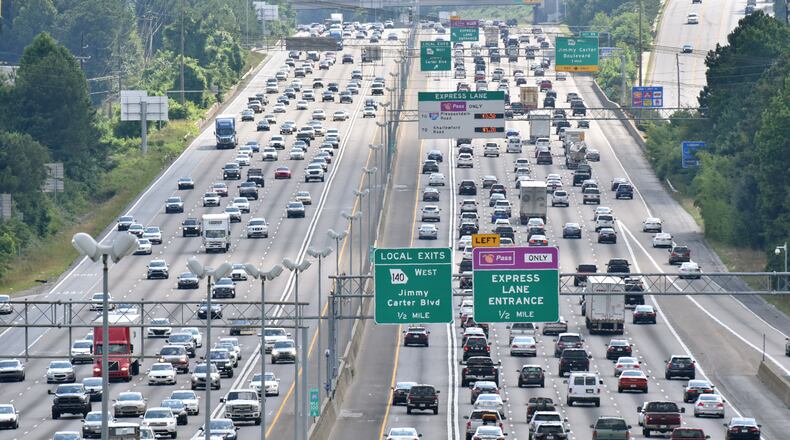One side effect of the coronavirus pandemic has been a substantial decrease in metro Atlanta traffic. At the height of sheltering in place in Georgia, traffic was down as much as 50% on some state highways and interstates.
Traffic is still down 20% from normal. And at least one state agency – the one that oversees metro Atlanta's growing network of toll lanes – hopes it picks up soon.
The State Road and Tollway Authority expected to take in about $46 million in toll revenue in the fiscal year that ends June 30, Executive Director Chris Tomlinson told a Senate panel last week. But it likely will fall about $13 million short of that goal.
That’s because light traffic during the pandemic has made the toll lanes less appealing to many motorists – why pay to bypass rush-hour traffic jams that aren’t nearly as bad as they used to be? And because the tolls fluctuate depending on traffic – the lighter the traffic, the less the toll – SRTA is taking a big financial hit.
“We’ve seen an unprecedented decline in toll revenue,” Tomlinson told lawmakers.
Under a proposed 2021 budget, SRTA would rely on $10 million from the Georgia Department of Transportation to help plug the budget hole. It also will use about $3 million of its $8 million budget reserve. And it will cut travel, contracting and other expenses.
Of course, SRTA’s pain is motorists’ gain. In February, a full-length trip on the I-85 express lanes in Gwinnett and DeKalb counties could cost $15 at rush hour. Recently, it’s been about $4 – and Tomlinson said that’s a sharp increase from a month ago.
In the long run, Tomlinson believes traffic will return to local highways, and with it will come higher tolls and revenue. Fall traffic volumes – when schools are back in session – may offer clues as to how long that will take.
But with many economists predicting a lengthy economic recovery, relatively cheap tolls may be a reality for the foreseeable future.
“We hope the traffic comes back sooner than predicted,” Tomlinson told the Senate panel.
About the Author
The Latest
Featured


